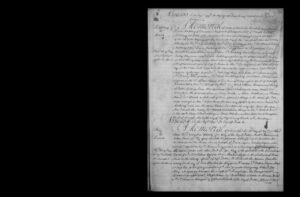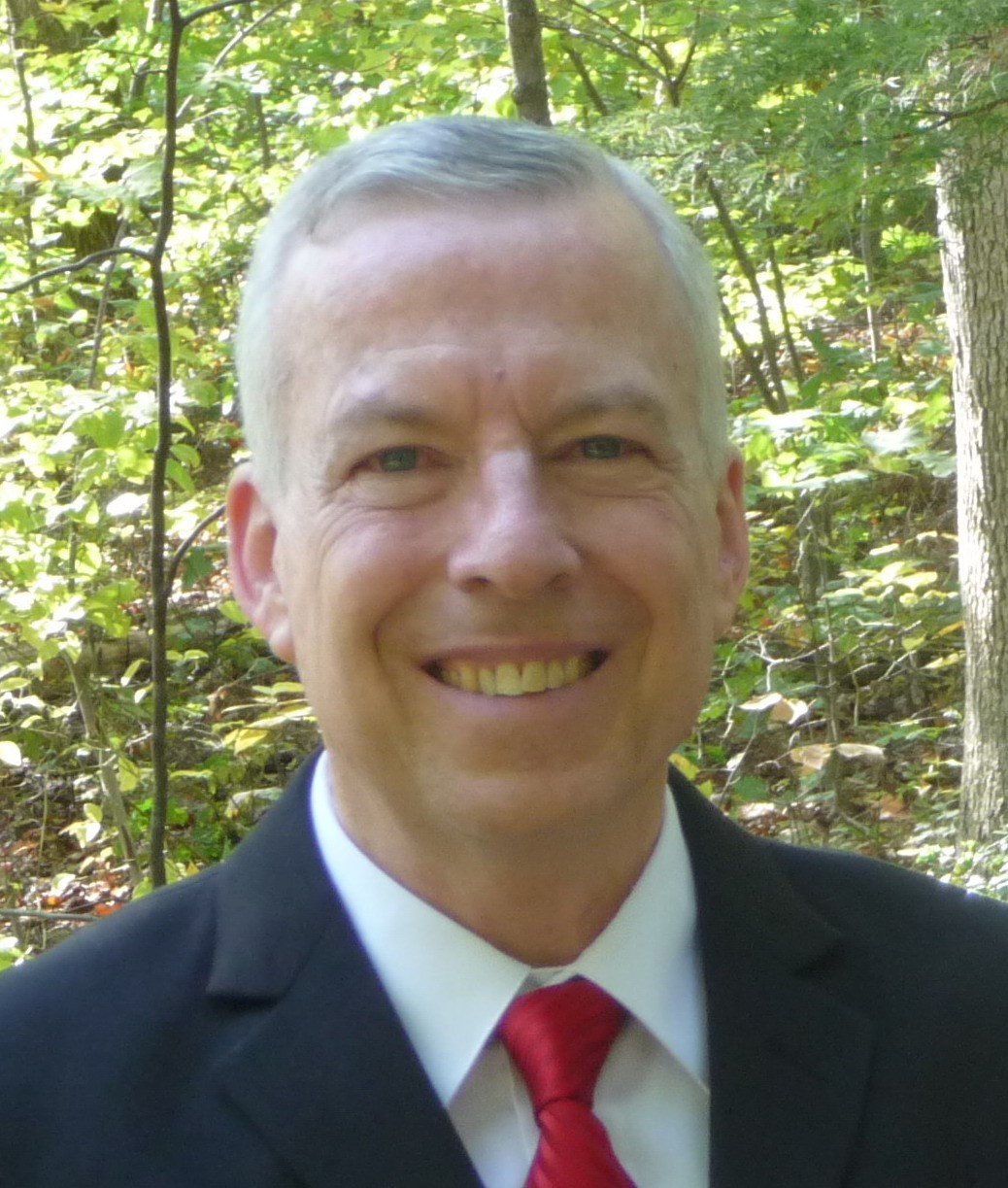 David and Margaret Mackelroy to James Warick. Click on image to expand it. Courtesy of the Family History Library
David and Margaret Mackelroy to James Warick. Click on image to expand it. Courtesy of the Family History Library
Deeds are wonderful sources for genealogists, but Irish deeds? One of the most voluminous collections of Irish records is also the most underappreciated and underutilized: more than 2,000 volumes of recorded “memorials” (detailed abstracts) of deeds, conveyances, and wills spanning more than 200 years can be found in the Irish Registry of Deeds (ROD). Like many others with Irish roots, I was long put off by the low likelihood of finding my poor rural landless ancestors among landlords and other people of means who had property and assets to protect in wills. To make matters worse, the collection is not user-friendly. However, now having taken the plunge into these records and making some quite unexpected and exciting discoveries, I have become a true believer in their value.
Since the early 1950s the ROD records covering 1708-1929 have been available to researchers – 2,686 microfilm reels! The films could be viewed at the Family History Library (FHL) in Salt Lake City, or at thousands of local Family History Centers worldwide for a nominal rental fee. Happily, they are now online, free to all, cataloged as “Transcripts of memorials of deeds, conveyances and wills, 1708-1929.”
Included are about 500 volumes of indexes. Unfortunately, only grantors are indexed, not grantees; the land indexes are sometimes difficult to decipher; and the formats and details of both grantor and land indexes change over time. So what prompted me to start digging into these formidable haystacks? Here are two good examples.
First, in early 2017 my wife Judy and I co-authored and published “The Hinksons of Ulster and Their Diasporas” on Chris Burgoyne’s Hingston One-Name Study website (https://cjb.emma.cam.ac.uk/hingston/). Prof. Burgoyne incorporated the material from our compilation into his own genealogical summation that has a link to our study (https://cjb.emma.cam.ac.uk/hingston/ulster.htm). Two years later another researcher came across our study while researching his Starr ancestors, at least one of whom lived in Bunn, Co. Cavan, where some of Judy’s ancestral Hinksons resided from the 1700s to the 1900s. Our email exchanges over the next several months were decidedly one-sided, as we benefited from a generous stream of more than two dozen ROD memorials involving Hinksons during 1735-1803 that he found in the recently digitized records on FamilySearch.
FamilySearch released its digitized ROD collection about the same time we completed “The Hinksons of Ulster,” so we did not use it.
FamilySearch released its digitized ROD collection about the same time we completed “The Hinksons of Ulster,” so we did not use it. We were amazed by what the memorials revealed: the names of some new Hinksons, spouses, and other relatives, and information on occupations and family, social, and business relationships. They also showed that Hinksons lived in, owned, or held leases and other interests in several places in Counties Cavan, Monaghan, and Fermanagh heretofore unknown to us. Moreover, they named the witnesses to the original deeds and to the registered memorials, the officials who recorded them, sometimes tenants and sub-tenants, and even occasional house occupants cited to specify the location or boundary of the land transactions!
Inspired and encouraged by these unexpected discoveries, I did intermittent research into the ROD indexes and memorials, including searching all grantor indexes for Hinkson variants, as well as land indexes for all the places in the adjoining counties of Cavan, Fermanagh, and Monaghan where Hinksons were known to have resided. The results: a 20+ page compilation of detailed extracts of more than 50 Hinkson-related memorials, 1726-1913, arranged chronologically, with corresponding FamilySearch catalog FHL Film and “DGS” (Digital Genealogical Society) numbers with digital image references; a chronological list of references to Hinksons in these memorials; an alphabetical list of places where Hinksons resided, with corresponding names and the year(s) of the transactions; and a longer alphabetical list of places where Hinksons had interests, e.g., leases or other business involvements, again with corresponding names and the year(s) of the transactions. We expect this compilation will be published in some form on the Hingston One-Name Study website, and we plan to produce a revised version of our “Hinksons of Ulster” study incorporating the new information from the ROD memorials plus other sources. All of this thanks to the digitized ROD collection and my change of heart about the potential benefits of tackling it!
The second example is quite modest but personally more gratifying because it allowed us to break through a 20+ year brick wall that we had all but conceded.
The second example is quite modest but personally more gratifying because it allowed us to break through a 20+ year brick wall that we had all but conceded. Judy’s maiden namesake immigrant ancestor, Rev. Robert Warwick, was born in Crewmore, Co. Armagh, in the early 1760s. He became a dissenting Presbyterian minister and in 1792 went to western Pennsylvania as an itinerant frontier preacher. Several years later he and Rev. Alexander McCoy defected from their presbytery and formed their own Reformed Dissenting Presbytery that labored throughout the region for several decades. Warwick settled in what is now stylish Glendale, Ohio, where his original hilltop log cabin was eventually transformed into a stately architectural edifice dubbed locally “Warwick Castle” and designated a historical landmark. Rev. Warwick died in the early 1830s while preaching to the scattered adherents on his circuit.
Over the years we had done extensive research on Robert Warwick, both in the United States and during multiple research trips to Ireland and Northern Ireland. We were reasonably confident that we had identified his father, James, whose name appears in a few records dating to the late 1700s/early 1800s, but we never found the name of Robert’s mother. Having virtually exhausted accessible contemporary records, we didn’t harbor much hope of doing so. However, buoyed by the remarkable success of venturing into ROD records for Hinksons, I searched the land indexes for Crewmore (various spellings, of course!) and found a 1760 memorial involving a "Warick."
The memorial (see illustration above) registered an agreement made on November 17 of that year (but not recorded until 1765) between David Mackelroy of Crumore and his daughter Margaret with James War(r)ick of Ballyreagh, Co. Armagh, under which Margaret would marry James and James would get 10 acres in Crewmore … which, by the way, remained in their family until the early twentieth century! This discovery confirmed another generation in the Warwick line, named James's wife and her father, and identified Ballyreagh as James’s residence before Crewmore. What a bountiful reward for a night’s work!
I hope these success stories will motivate readers with Irish ancestry to take the plunge into the ROD records and reap their own rewards. If so, two other related resources are worth mentioning. The countless people named in the memorials will remain fugitives until this enormous collection has been fully indexed and/or rendered searchable online, so one should start by checking the volunteer Registry of Deeds Index Project (https://irishdeedsindex.net/index.php), which is approaching a half million index entries as of this writing (July 2021). And given the peculiarities of these records, researchers are well-advised to consult the exhaustive A Guide to the 18th Century Land Records in the Irish Registry of Deeds by Brian Nugent (Corstown, Oldcastle, Co. Meath, Ireland: B. Nugent, 2012). Unfortunately, only a few libraries have it, but it has been digitized for limited viewing on Google Books, where, happily, most pages are viewable!
Share this:

About Joe Smaldone
Joe Smaldone and his wife Judy Warwick Smaldone have been researching their family’s history for more than 20 years. Their research has taken them to many national, state, and local libraries, archives, court houses, churches, cemeteries, historical and genealogical societies, and other research sites across the United States, and abroad to Ireland, Italy, and Sweden. They are members of NEHGS and the New York Genealogical and Biographical Society. Joe was an adjunct professor at Georgetown University, where he created and taught a course entitled Your Family in History. He is a Genealogy Research Consultant at the FamilySearch Center, Annapolis, Maryland, and has published numerous genealogical studies, articles, abstracts, blog posts, and indexes.View all posts by Joe Smaldone →